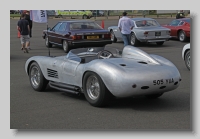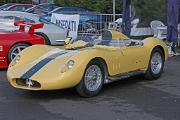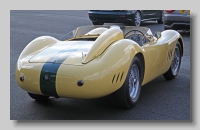| Car Albums | |||||
| Makers | |||||
| Models | |||||
| Maserati Index | |||||
| Medardo Fantuzzi | |||||
| Full menu functions for the buttons above are only available if you ALLOW BLOCKED CONTENT. My menu scripts provide drop-down menus that have been tested with the latest Mozilla browsers. If the scripts do not run, limited navigation is given by these buttons | |||||
Maserati 300S Maserati wanted to enter the new FIA World Sports Car Championship inaugarated in 1953, but found its engines were two small to compete against Ferrari, Jaguar and Mercedes-Benz. At first Maserati tried to build a sports car with the engine of the 250F F1 car, but in the end Vittorio Bellentani developed a new 2992cc dohc 6-cylinder engine of lower compression to comply with FIA regulations and for reliability on longer sports car races. The 300S was ready for the 1955 season but didn't do very well, and was modified for 1956 with better earodynamics. Stirling Moss took the 300S to victory in the 1956 Nurburgring 1000 KM race and many other races to finish second in the World Championship. In 1957 Maserati started to develop the larger 450S and the 300S dropped into the background, before the FIA imposed a 3-litre limit for the 1958 season; Maserati withdrew from factory racing in that year. |

|

|

|

|

|

|

|

|

|
| Italian Cars | Simon Cars | ||||
Images created by Simon GP Geoghegan Email Simon